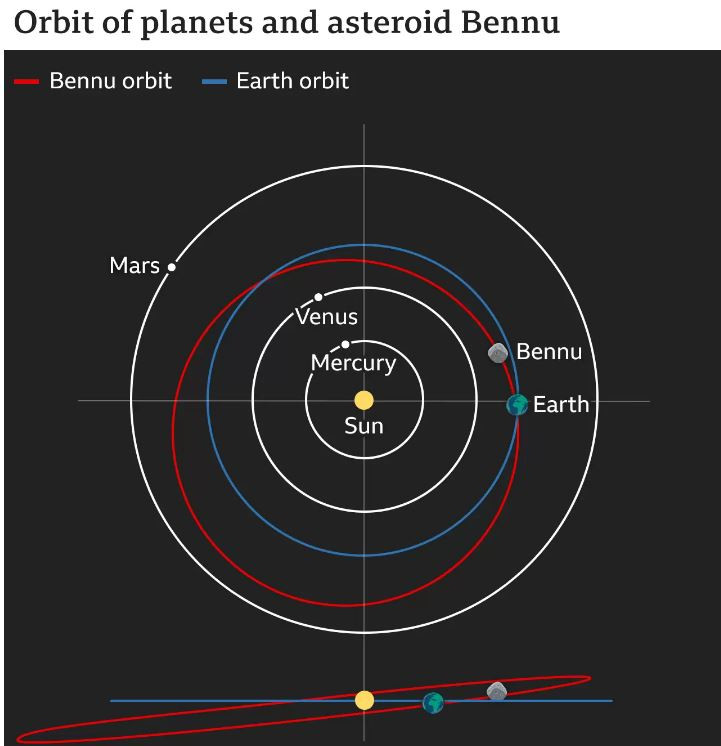The analysis of the sample is expected to increase the knowledge of science about the creation and evolution of the Solar System, about the initial stages of the formation of the planets, as well as about the origin of organic compounds
NASA’s Osiris-Rex capsule will enter Earth’s atmosphere on Sunday at 15 times the speed of a rifle bullet.
Upon her entrance it will shoot a fireball through the sky until a heat shield and parachutes slow the descent and land smoothly in Utah’s West Desert.
The capsule carries a precious cargo, a handful of dust collected from the asteroid Bennua mountain-sized space rock expected to provide answers to the deepest existential questions: Where do we come from?
Particularly, the analysis of the sample is expected to increase the knowledge of science about the creation and evolution of the Solar Systemfor the initial stages of the formation of the planets, as well as for the origin of the organic compounds that led to the genesis of life on Earth
“When we receive the 250 gram sample of asteroid Bennu, we will be looking at material that existed before our planetmaybe even some grains that existed before our solar system”says Professor Dante Lauretta, the mission’s principal investigator.
“We try to combine our principles. How did Earth form and why is it a habitable world? Where did the oceans get their water from, where did the air in our atmosphere come from and, most importantly, what is the source of the organic molecules that make up all life on Earth?».
The prevailing thought is that many of the basic ingredients actually came to our planet early in its formation in the form of a shower of impacting asteroidsmany of them like Benu.
The engineers ordered them final adjustments to the orbit of the Osiris-Rex spacecraft. All that remains is to make the go, no-go decision to release the capsule to fall to Earth this weekend.
The mission to obtain fragments of Bennu began in 2016, when NASA launched the unmanned Osiris-Rex spacecraft toward the 500-meter-wide (1,640-foot) asteroid. It took two years to reach its destination and another two years of mapping before the mission team could confidently locate a spot on the surface of the space rock and collect a “soil” sample.
Source :Skai
I am Terrance Carlson, author at News Bulletin 247. I mostly cover technology news and I have been working in this field for a long time. I have a lot of experience and I am highly knowledgeable in this area. I am a very reliable source of information and I always make sure to provide accurate news to my readers.












